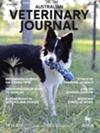Inducing emesis in Australian dogs and cats: agents, adverse effects and antiemetic administration
Abstract
Objective
To describe the agents used by Australian veterinarians in inducing emesis in dogs and cats, adverse effects and antiemetic administration.
Methods
An anonymous online mixed-methods survey incorporating closed and open-ended questions was distributed to Australian veterinarians via e-newsletters and social media between April and June 2024.
Results
From 317 valid responses, 316 respondents induced emesis in a dog (99.7%) and 128 (40.4%) induced emesis in a cat in the previous 12 months. The most common protocols were subcutaneous injection of apomorphine (n = 310/316, 98.1%) for dogs and intramuscular injection of dexmedetomidine or medetomidine (n = 79/128, 61.7%) for cats. Respondents reported significantly reduced success (n = 74/128, 57.8%) inducing emesis in cats compared with dogs (n = 312/316, 98.7%) (P ≤ 0.001). Sedation was the most reported adverse effect for both species. The subconjunctival route of apomorphine was found to significantly increase the risk of adverse effects in dogs, compared with the subcutaneous route (P = 0.03). Antiemetics were more frequently administered to dogs than cats. Univariable logistical regression analysis revealed that veterinarians with fewer than 5 years' experience were significantly more likely to use an antiemetic drug when inducing vomiting in dogs (P = 0.05) compared with veterinarians with 31 or more years of experience.
Conclusion
These findings enable clinicians to benchmark practices against those of their peers, characterise adverse effects associated with emesis induction and refine their technique to improve patient welfare. A more reliable means of inducing emesis in cats is needed.

 求助内容:
求助内容: 应助结果提醒方式:
应助结果提醒方式:


